

CarExpert.com.au
The CarExpert team's favourite cars of 2025
2 Days Ago
Quicker, more composed and more fun on track with a DCT to rival more expensive sports cars. The updated Hyundai i30 N has been worth the wait.
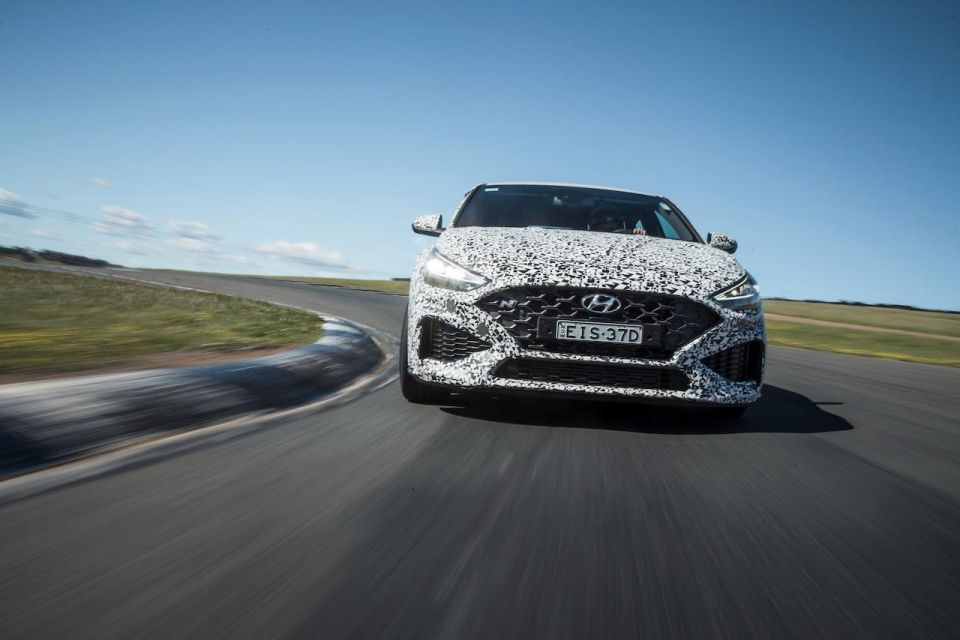
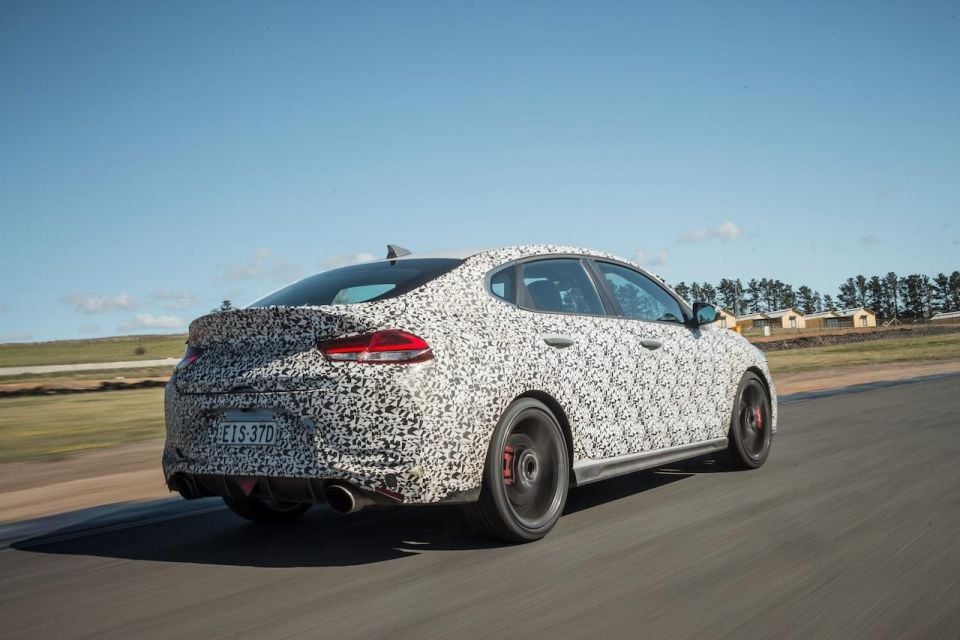

Senior Road Tester
New from
$23,420
excl. on-roads

Senior Road Tester
New from
$23,420
excl. on-roads


Senior Road Tester
New from
$23,420
excl. on-roads

Senior Road Tester
New from
$23,420
excl. on-roads
Quickly see how this car stacks up against its competition. Select any benchmark to see more details.
Where expert car reviews meet expert car buying – CarExpert gives you trusted advice, personalised service and real savings on your next new car.
In more than 16 years of reviewing cars all over the globe, I can count on one hand the number of times I’ve had the opportunity to track a prototype performance car. It’s a rare thing.
The last time I drove an i30 N on track was back in 2017 at Vallelunga, near Rome, at the international launch. It’s not the easiest of circuits for first timers, as it doesn’t flow like some other European tracks.
Either way, it was a watershed moment for Hyundai. Here was a hot hatch you could seriously cane for lap after lap with no side effects. It also felt like a step up on the Volkswagen Golf GTI, cornering with almost no body roll and packing superb stopping power that didn’t fade after track abuse.

The i30N was altogether more focused, more resolved, and able to be driven hard on track by any punter capable of rowing a manual transmission.
And therein lies the problem. Too many enthusiasts don’t drive manuals these days, a point made all too clear by the likes of Italian exotic marques like Ferrari and Lamborghini, both of which don’t currently offer a manual transmission.
The same is true of McLaren. Only Porsche continues to offer a stick shift option on its more specialised models – and I’d argue that when Porsche does a manual gearbox, it somehow feels more Porsche than the PDK, as good as that is.
If I had any issue with the i30 N that fine day in Italy, it was the longer-than-expected shifter throws compared to the benchmark Honda Civic Type R.
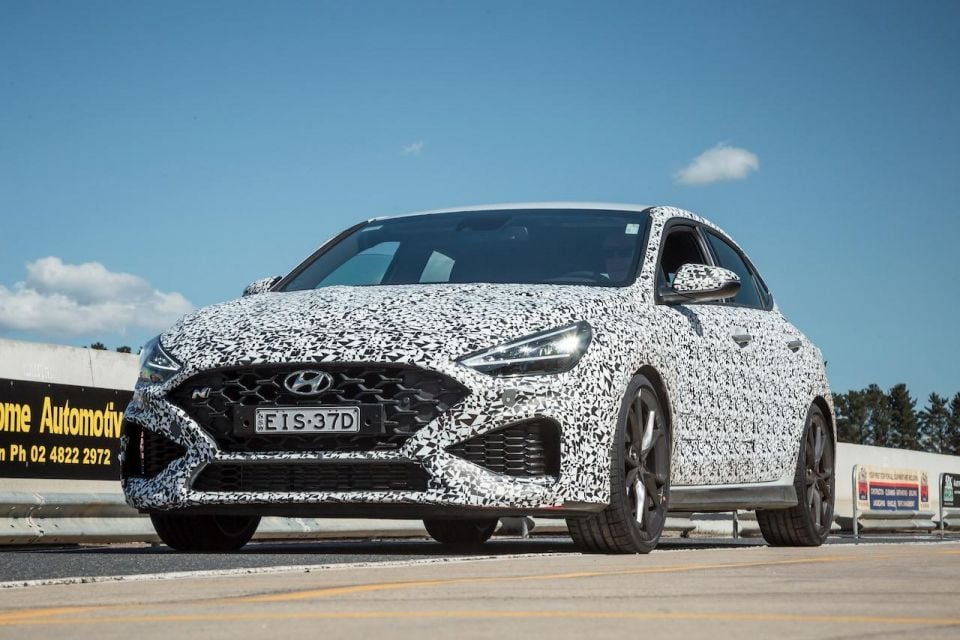
Either way, I wasn’t the only one asking for a quick-shifting dual-clutch gearbox. Not just for the track, but for day-to-day drivability in big cities plagued with never-ending traffic. Surely that would have significantly increased sales.
The ongoing excuse from Hyundai’s camp was that the head of research and development – and one-time guru from BMW M, Albert Biermann – wanted one, but it would be years before he was able to perfect it for the i30 N, given it was a car on which he’d staked his reputation.
Knowing Biermann well enough, it was either going to be a cracker or it wouldn’t see the light of day. Fair enough, because there are plenty of bad examples that don’t leave the shifting to the driver, or just don’t shift fast enough to be any better than a top-notch torque converter from the likes of ZF.
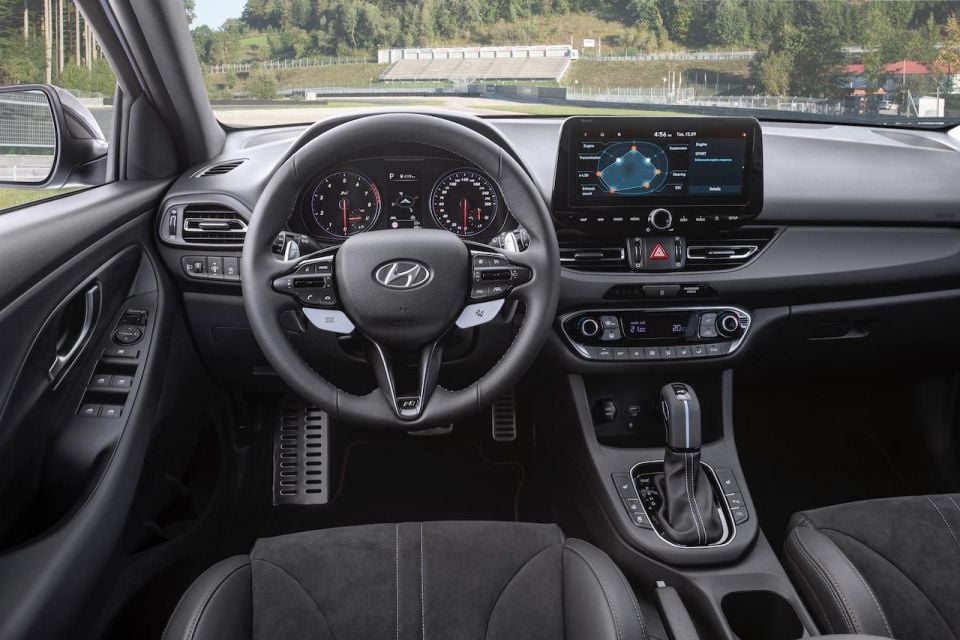
There were times I’d ask politely as to when it might arrive and it was always ‘next year – but later in the year’. After three years in the making it’s finally here, at least in this prototype form for the facelifted 2021 i30N.
Wakefield Park Raceway near Goulburn was the venue, a track I’d never driven. And yep, it was a proper prototype, complete with full camouflage wrap and a few electronic bugs that weren’t quite ironed out yet. Fine with me, because just the thought of a new i30N with a Biermann-developed DCT was thrilling in itself.
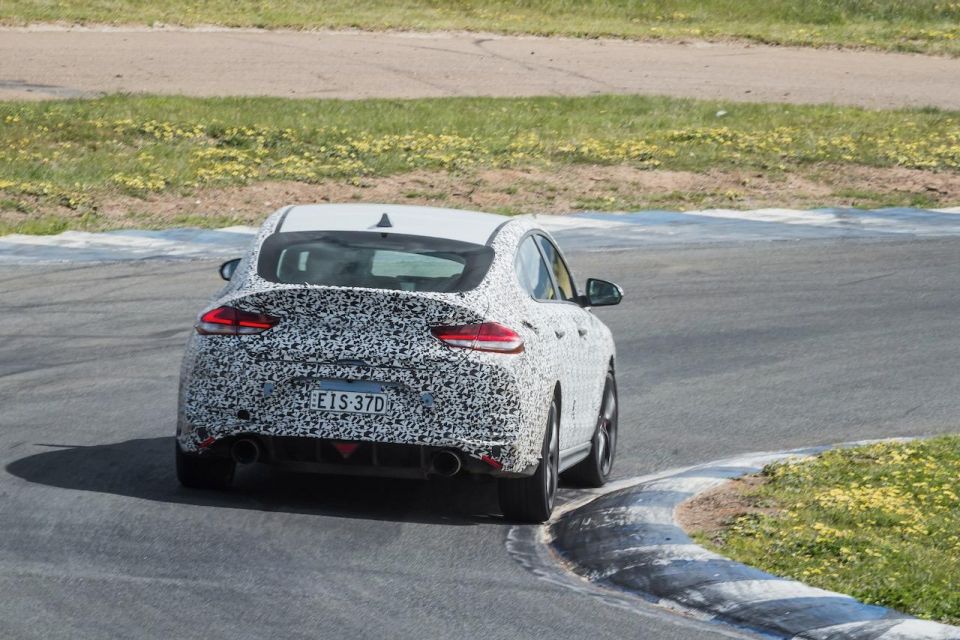
The engine note itself is more robust with more bass and more volume than the current setup, while the twin exhaust tips appear to be almost twice the size of those on the current i30 N. It’s a good sign, and that’s before I’ve driven a single metre on track.
This is only a mid-life facelift engineered to keep the wolves at bay, those wolves being the 2021 Golf GTI Mk8, Civic Type R, and Renault Megane RS that will get the more powerful engine from the Trophy Edition.
Even the incoming Yaris GR will be fair game for the new i30 N DCT.

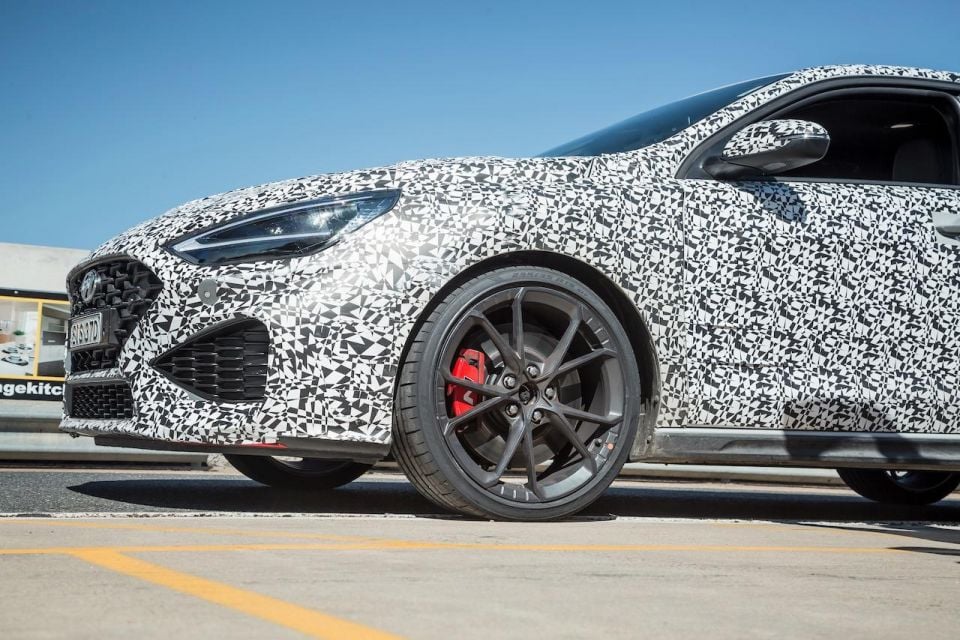
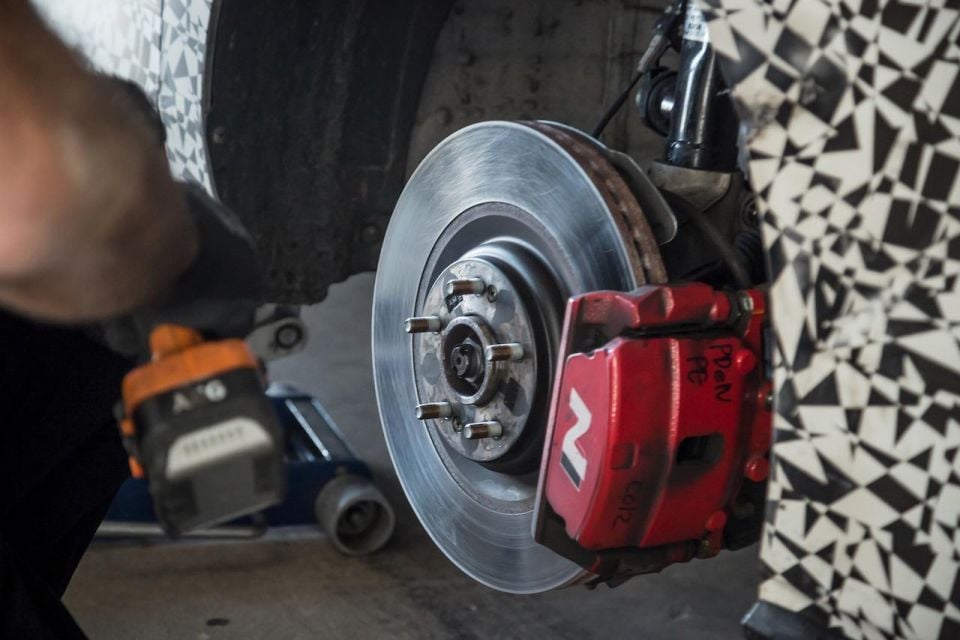
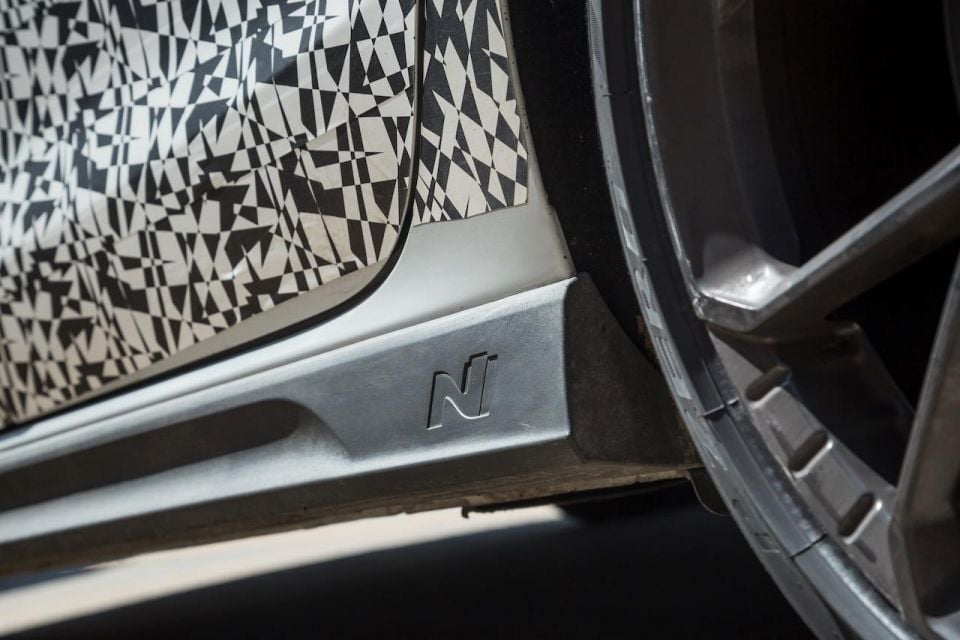
While the big news centres around the new wet dual-clutch transmission, improvements have been engineered into the powertrain too. Some will be quick to brush aside the gains in power and torque (up 4kW and 39Nm to 206kW and 392Nm, respectively) but the way this thing puts the power down will surprise many.
Hyundai calls it ‘flat power’ because right out of the box it feels like a different powertrain. One that delivers a more substantial shove from lower down in the rev range. There’s no sudden surge or lag zone, just greater thrust from 1950 through 4600rpm and more noise to boot.
Right from the get-go Biermann was quick to point out the futility of chasing 0-100km/h times over absolute fun factor behind the wheel, but as numbers go 6.1 seconds for the manual i30 N meant it was no slouch and significantly quicker than the Golf GTI.
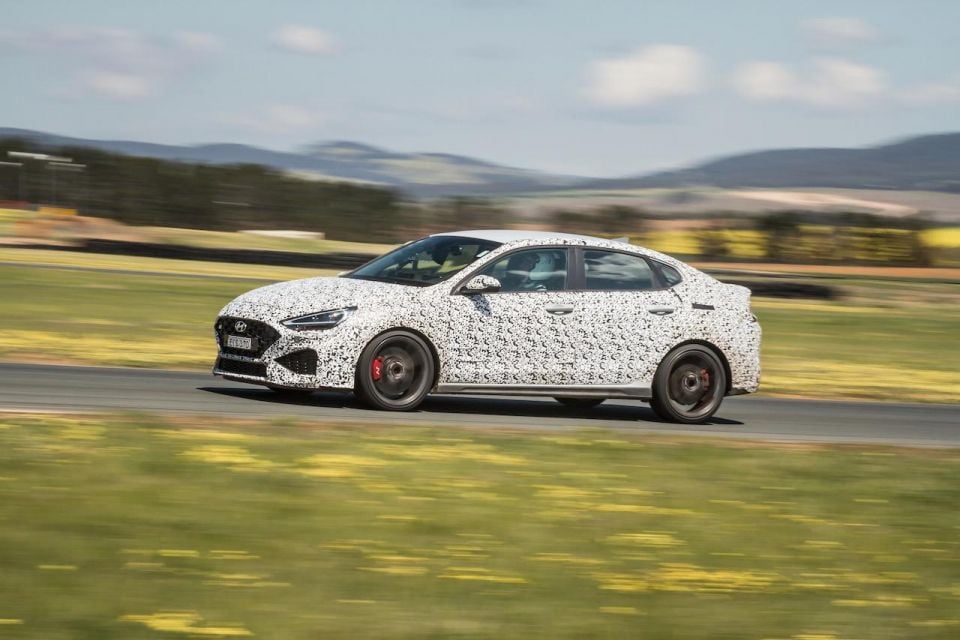
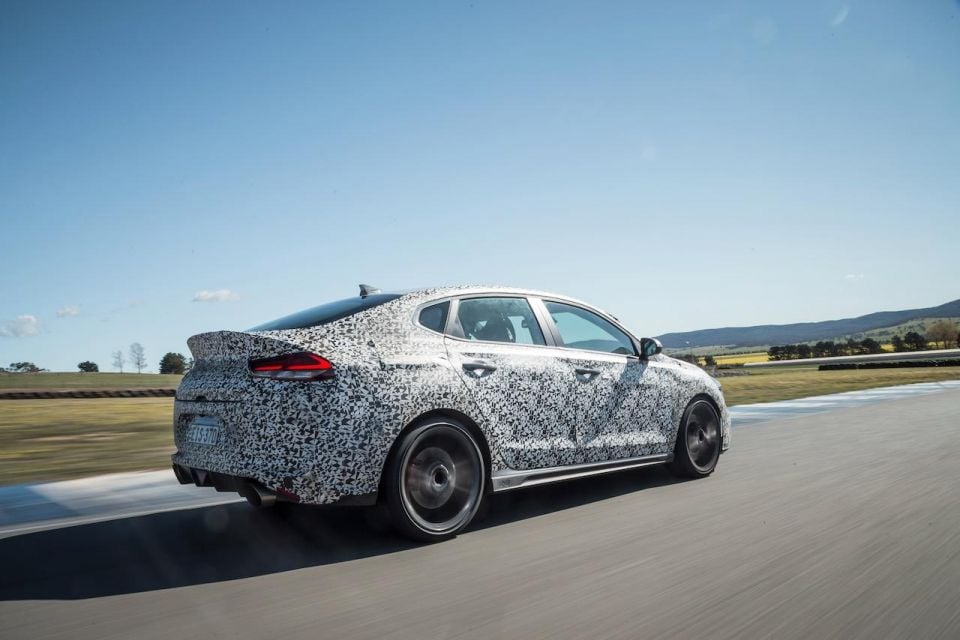
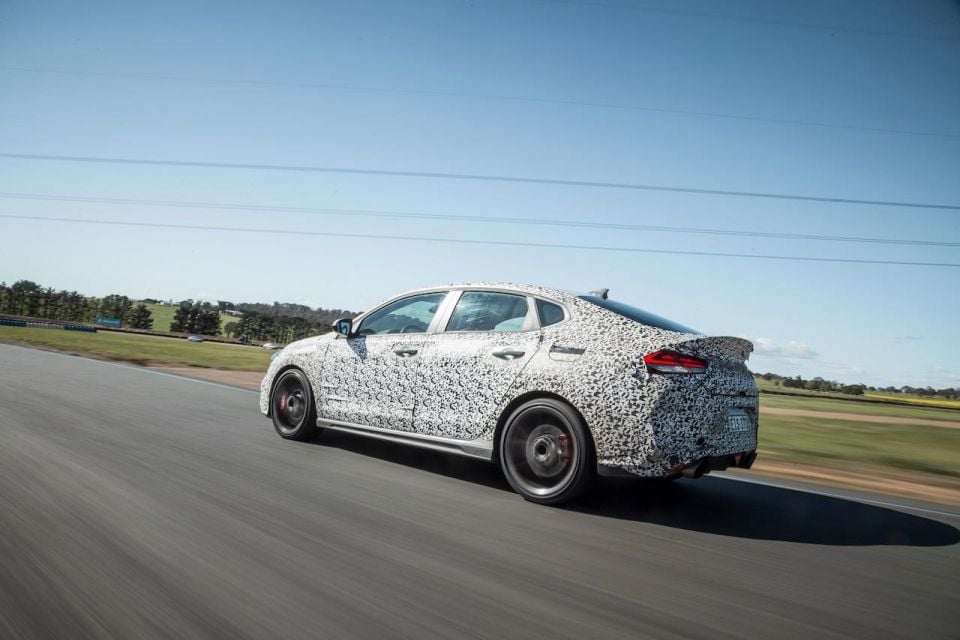
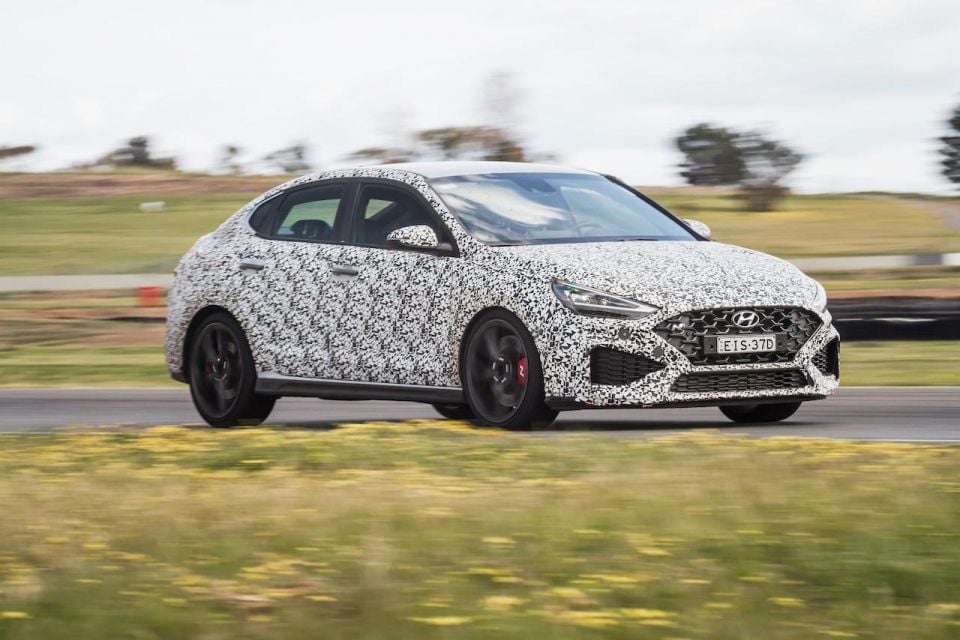
The 2021 i30 N shaves another two tenths off that time for a 5.9 second sprint. Interestingly, the spec sheet we have from Hyundai has the same figure for manual and DCT versions.
It was a point made clear to me as I was flat out down the main straight; it felt far more potent than the outgoing version and performance is significant if not exhilarating.
Throttle response is noticeably sharper too, something easily tested at this circuit where getting on the throttle early is both crucial and enormously satisfying in this car, thanks in no small part to the new wet-type dual-clutch transmission. ‘Wet’ means oil is used to cool the transmission components for less friction and better torque transfer, of course.
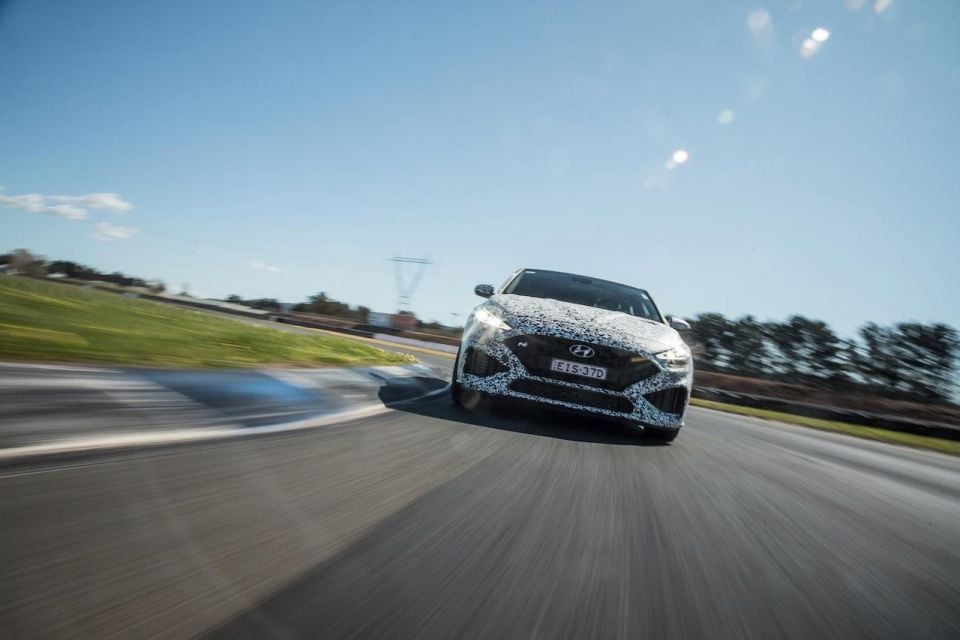
It feels demonstrably quicker in every gear, at least up to and including fourth (or was it fifth, I was having too much fun to notice). Not only that, it doesn’t seem to matter where you are in the rev range, you just point and shoot and it truly hammers.
Like most DCTs these days there are drive modes and there are shift modes. The i30 N gets three such electronic maps. The first is dubbed N Power Shift, effectively giving you a burst of acceleration on upshift by reducing any torque loss during the gear change.
There’s also N Grin Shift (who comes up with these names?) which gives you max power from the engine and transmission for 20 seconds no matter what drive mode you’re in.
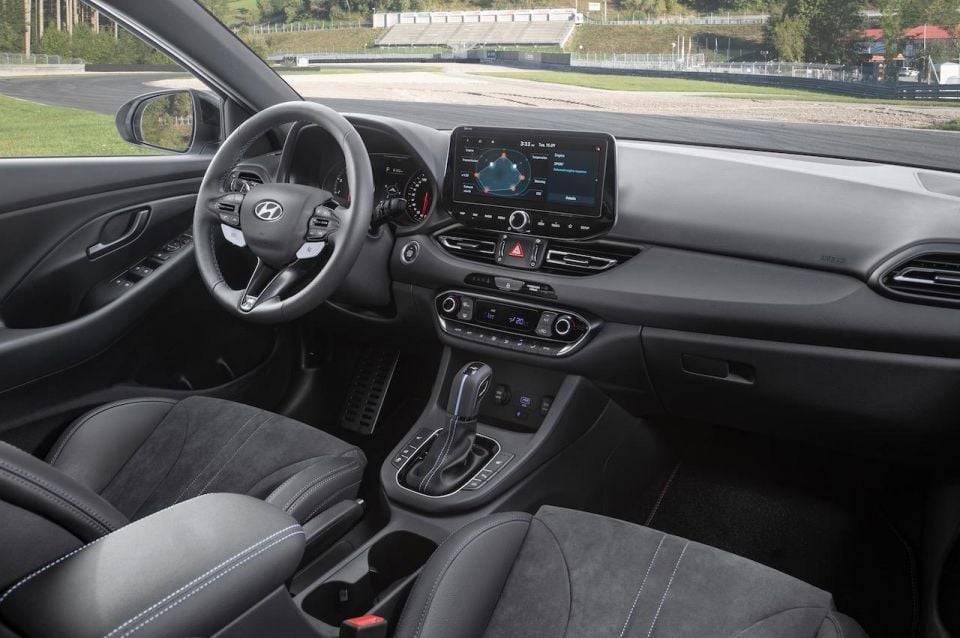
And, last but not least, there’s the N Track Sense Shift which automatically activates when the system senses dynamic driving. I’m ashamed to admit, but in the interest of authenticity this is the only mode I used on track in concert with ‘N’ driving mode which adjusts the parameters of the engine, suspension, ESC, electronic LSD, exhaust sound, steering, and transmission.
Whatever magic goes on here, it’s totally seamless and means you won’t have to touch the paddle shifters. Not once in three sessions. I suppose I should have tried pulling a paddle or two.
But like the PDK in my own 911, on track it’s quicker to leave in in Sport + and let the transmission do all the heavy lifting while you focus on hitting your apexes.
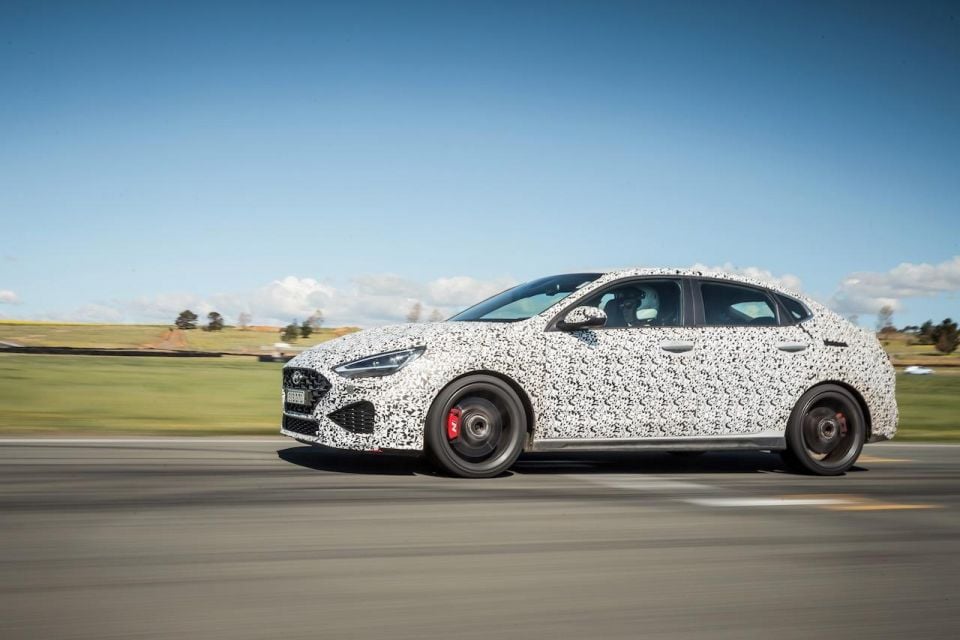
Honestly, you’ll get the most out of the new i30 N DCT if you leave it in auto. You can’t quite believe it’s an affordable hot hatch and a Hyundai one at that. But I seriously doubt there will be many rivals that can stay with this thing on track.
Hyundai has gone with new lightweight 19-inch forged alloy wheels shod with a bespoke-compound Pirelli P-Zero tyre for optimum grip and wear. Well, that’s the PR spin. Importantly, those wheels slice 14.4kg off the weight of the previous alloys.
Firstly, there’s a stack of grip available on turn-in (more than you might imagine), which allows you to get on the power early and really punch it on the exits.

The same goes for body control. The i30 N DCT is obviously heavier than the previous manual version but it feels more chuckable into corners with nicely matched steering response, linearity, and weighting.
I checked the state of these tyres after a full day’s track abuse by mostly quick drivers and remarkably they were still in good shape.
The brakes too are truly excellent, but then they were also a standout feature of the original i30 N at the track in Italy, with little or no fade after countless laps. They’re not Brembo or AP Racing, rather they’re an in-house component. Front brakes have grown from 345mm to 360mm as part of the 2021 update, as if the originals weren’t already strong enough.

The camouflage on our prototype i30 Fastback N mostly blocked the new exterior design features, but what was evident was the more aggressive front and rear bumpers, and new LED headlights and taillights sporting a fresh light signature for the model.
On closer inspection, there are aerodynamic side fins up front helping create air curtains down each side of the car to both enhance airflow and reduce turbulence from under the wheel arches.
Missing from the prototype were the N Light Sport seats in leather and Alcantara with bigger bolsters, Performance Blue stitching and an illuminated N logo (like BMW M3 and M4s), as well as a weight saving of 2.2kg off the standard seats. That same package also boasts heated seats and a heated steering wheel, with seatbelts sporting a new Performance Blue accent.

Safety has been beefed up too. The new i30 N DCT and manual – it’ll be available with both transmissions – will have a full suite of all the latest driver aids including forward collision warning with pedestrian detection, lane-keeping assist, lane follow assist, blind-spot monitoring, blind-spot collision avoidance assist, safe exit assist, rear cross-traffic alert, and rear cross-traffic avoidance assist.
Inside, there are also a few changes and upgrades like a larger 10.25-inch touchscreen and a Performance Data system similar to that available on Porsche’s sports cars.
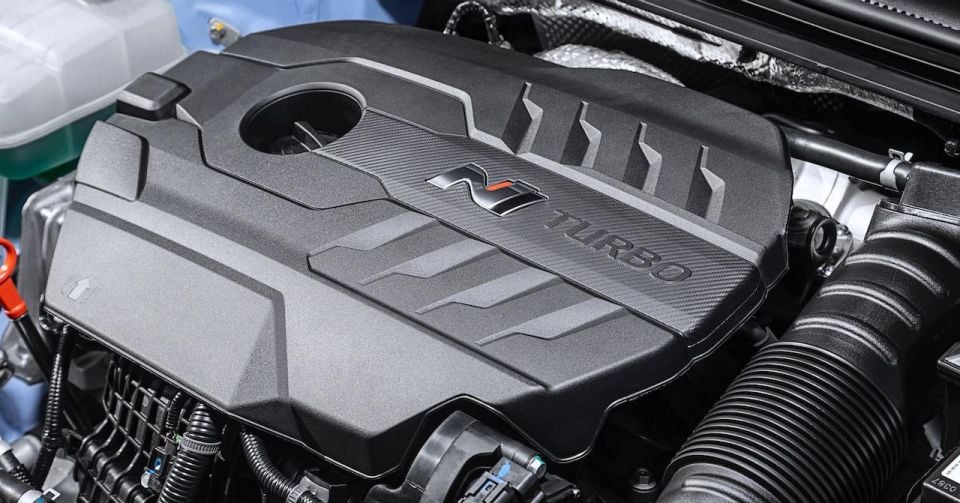
Where expert car reviews meet expert car buying – CarExpert gives you trusted advice, personalised service and real savings on your next new car.
The new i30 N will touch down locally in the first half of 2021, with the model line-up and pricing announced closer to that date.
Where expert car reviews meet expert car buying – CarExpert gives you trusted advice, personalised service and real savings on your next new car.
Anthony Crawford is a CarExpert co-founder and senior presenter with 20+years in automotive journalism and content creation.


CarExpert.com.au
2 Days Ago


Max Davies
4 Days Ago


Damion Smy
4 Days Ago


Max Davies
4 Days Ago


Max Davies
6 Days Ago


Damion Smy
7 Days Ago